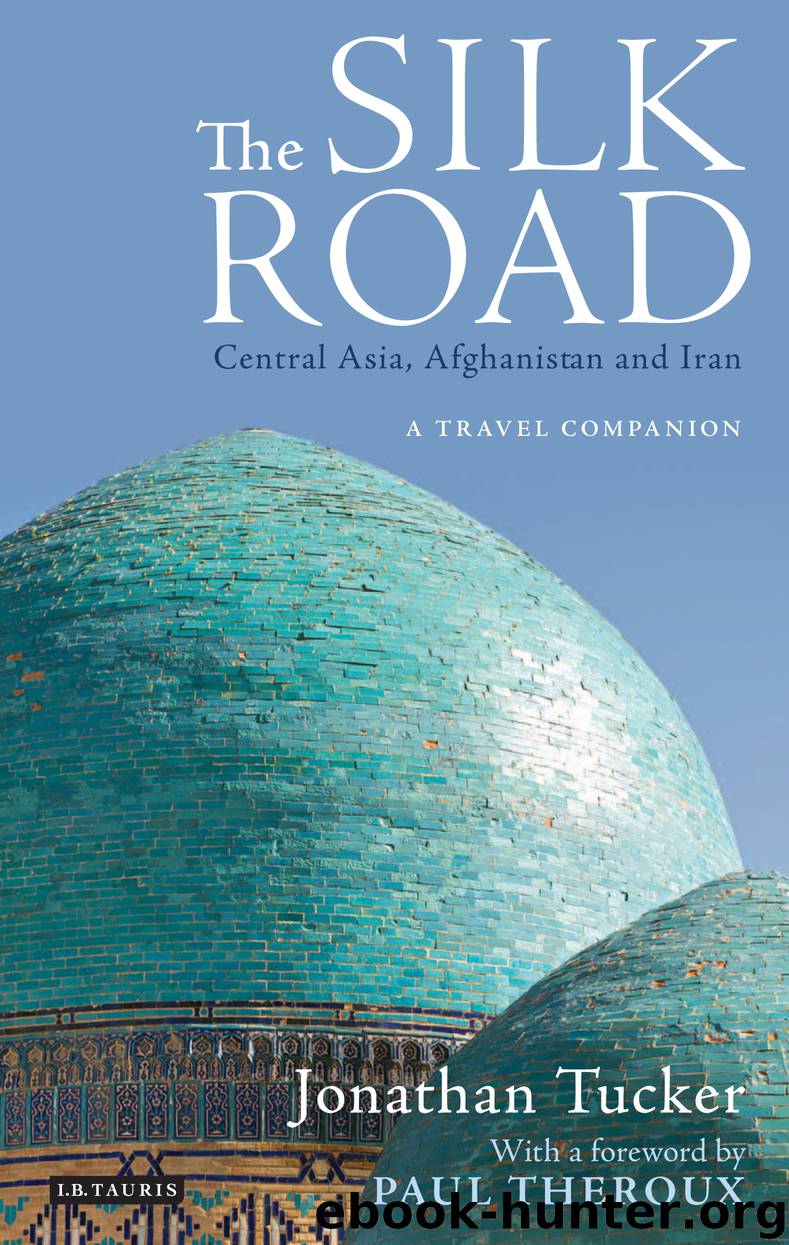The Silk Road--Central Asia, Afghanistan and Iran by Jonathan Tucker

Author:Jonathan Tucker
Language: eng
Format: epub
ISBN: 9780857739261
Publisher: I.B.Tauris
Published: 2015-04-19T16:00:00+00:00
Figure 25
Sogdian clay ossuary and deformed skulls. Seventh–eighth century.
Over the next 300 years control of the city changed hands a number of times but it continued to thrive as a commercial centre. Under the Kharakhanids (992–1211) Afrasiab was rebuilt as an administrative and military base and its main mosque enlarged – but the city was doomed. In 1220 it was attacked by the Mongols, its defenders cornered in Afrasiab’s mosque and slaughtered. The Mongols then proceeded to tear down the city’s aqueduct and Afrasiab was abandoned for all time. Samarkand’s population fell to less than a quarter of its original number and, at the time of Ibn Battuta’s visit during the first half of the fourteenth century, the city had still not been fully rebuilt:
I journeyed to Samarqand, which is one of the largest and most perfectly beautiful cities in the world. It is built on the bank of a river where the inhabitants promenade after the afternoon prayer. There were formerly great palaces along the bank, but most of them are in ruins, as also is much of the city itself, and it has no walls or gates.
(Ibn Battuta. Translated by H. A. R. Gibb in Ibn Battuta, 1929)
Paradoxically, the city’s glittering age occurred during the final years of the Silk Road. The Samarkand of the Timurids was capital of a vast empire, and a series of grandiose construction projects caused the city to take on a form that can still be seen today. Walls of 7 km in length were built around the town, now positioned to the south of old Afrasiab, and a citadel built in the western part of the city to contain Timur’s residence and treasury – the Kok-Saray, or ‘Blue Palace’. During the late fourteenth and the first few years of the fifteenth century, Timur embarked on a veritable orgy of construction in Samarkand with the help of craftsmen brought from the conquered territories. Within the newly rebuilt walls he installed six gates with roads leading from each to the Registan Square – in Timur’s day the city’s central point, covered by a domed bazaar. Samarkand’s population was large – about 150,000, according to Ruy Gonzalez de Clavijo, representative of King Henry III of Castile – and included Turks, Arabs, Moors, Greeks, Armenians and Indians. There was a strong contingent of Christians, too – Catholics and Nestorians among them – and the Registan Square and the surrounding markets were filled with goods from the countries of the Silk Road:
The markets of Samarqand further are amply stored with merchandise imported from distant and foreign countries. From Russia and Tartary come leathers and linens, from Cathay come silk stuffs that are the finest in the whole world, and of these the best are those that are plain without embroideries. Thence too is brought musk which is found in no other land but Cathay, with balas rubies and diamonds which are more frequently to be met with in those parts than elsewhere, also pearls, lastly rhubarb with many other spiceries.
Download
This site does not store any files on its server. We only index and link to content provided by other sites. Please contact the content providers to delete copyright contents if any and email us, we'll remove relevant links or contents immediately.
Autoboyography by Christina Lauren(4680)
Asking the Right Questions: A Guide to Critical Thinking by M. Neil Browne & Stuart M. Keeley(4580)
Dialogue by Robert McKee(3587)
Eat That Frog! by Brian Tracy(3518)
Sticky Fingers by Joe Hagan(3455)
Journeys Out of the Body by Robert Monroe(2989)
Elements of Style 2017 by Richard De A'Morelli(2945)
Annapurna by Maurice Herzog(2843)
Schaum's Quick Guide to Writing Great Short Stories by Margaret Lucke(2806)
Full Circle by Michael Palin(2774)
The Diviners by Libba Bray(2445)
The Art of Dramatic Writing: Its Basis in the Creative Interpretation of Human Motives by Egri Lajos(2414)
The Mental Game of Writing: How to Overcome Obstacles, Stay Creative and Productive, and Free Your Mind for Success by James Scott Bell(2396)
Why I Write by George Orwell(2360)
Atlas Obscura by Joshua Foer(2350)
In Patagonia by Bruce Chatwin(2273)
The Fight by Norman Mailer(2160)
The Elements of Style by William Strunk and E. B. White(2077)
Venice by Jan Morris(2051)
